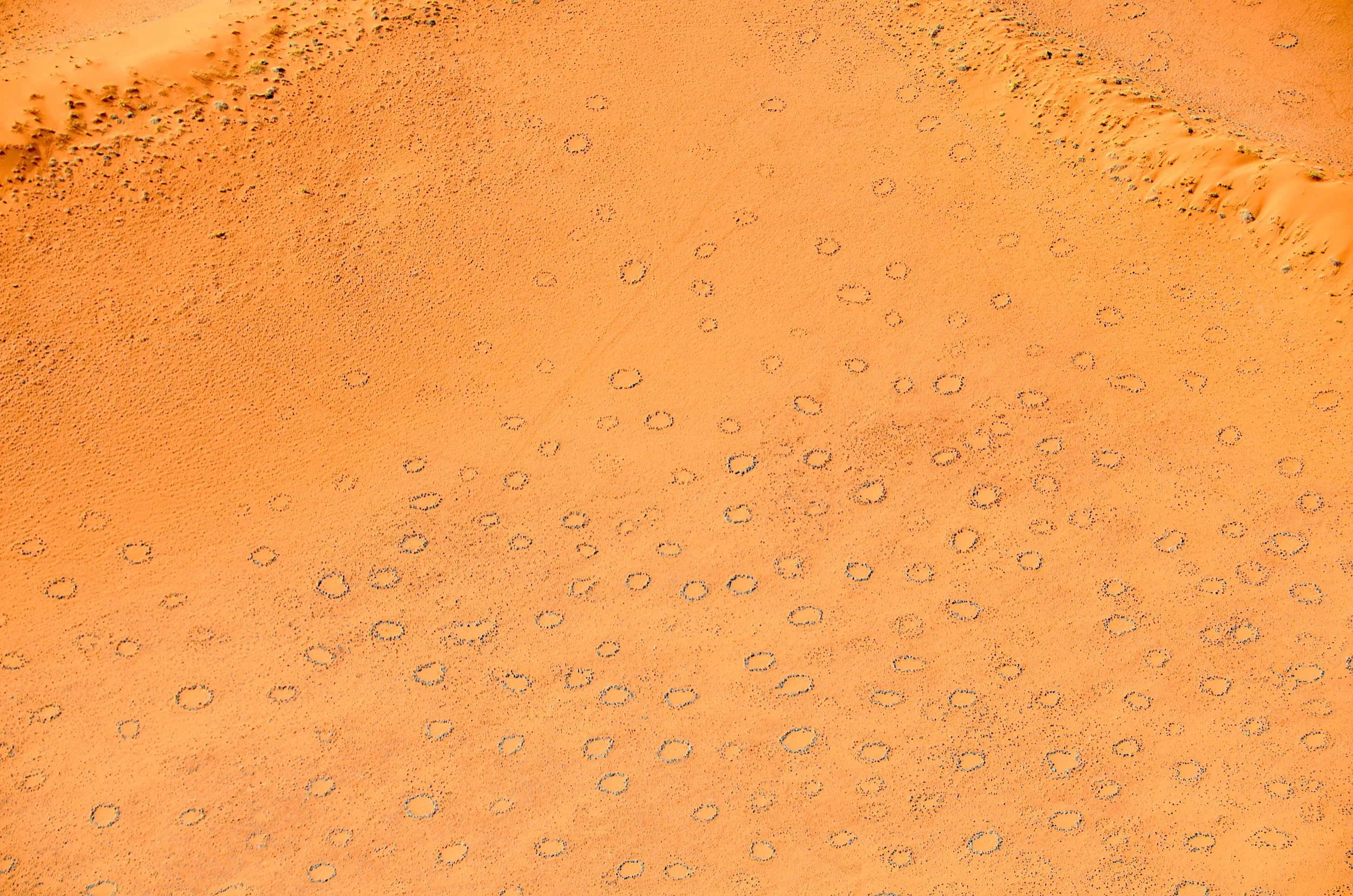Fishing for clues to solve Namibia’s fairy circle mystery
Aerial view of Fairy circles within Namib-Naukluft National Park | Olga Ernst & Hp.Baumeler on Wikimedia Commons
By Nicholas St. Fleur | New York Times
With its bone-dry grasslands and oppressive heat, the middle of the Namib Desert may seem like a strange place to go fishing. Yet there Jennifer Guyton and Tyler Coverdale were, standing in a sea of orange sand and brittle yellow grass with their 30-foot carp pole.
But the two Princeton graduate students weren’t trying to catch some sort of desert-dwelling dogfish or a literal “sand shark.” That would be absurd. Instead, they had swapped the hook with a camera so they could investigate the scenery around something much more scientifically sensible: fairy circles.
That is what scientists call the mysterious bald spots speckled across Namibia’s grasslands. The rings are six feet to 115 feet wide and are regularly spaced out in a hexagon or honeycomb pattern. As their ethereal name would imply, fairy circles have long bewildered researchers as to their origins. But a new study published on Wednesday in the journal Nature that Ms. Guyton and Mr. Coverdale were involved in seeks to offer some insights into how the enchanting landscapes may have formed.
Although the name fairy circles sounds sweet and peaceful, there is passionate scientific disagreement over how they arise, and the two prevailing hypotheses have become adversaries in the dispute.
One side suggests that termites, locked in never-ending competition with neighboring colonies, create the circles as they fight for dominance and resources. The other says that perpetually thirsty plants simultaneously assist and compete with their neighbors’ roots, causing the vegetation to “self-organize” into the patterns. The new study suggests that termites and plants may be jointly responsible for forming fairy circle landscapes in Namibia. And it has received mixed reviews from scientists entrenched in the dispute.
“Everyone was focusing on the circles and not what was happening in between them”
Ms. Guyton said that each of the grassy patterns was as different as fingerprints, but were mathematically similar. By comparing the photos with their model, the team verified that the second pattern did exist in the grass surrounding the Namibian fairy circles. That finding, they said, confirmed that their mathematics reflected reality and suggested that only by interacting together could insects and plants create the landscape that characterizes Namibian fairy circles.
Some fairy circle experts firmly placed in either team termite or team plant had strong doubts about the paper’s findings, while others welcomed it.

